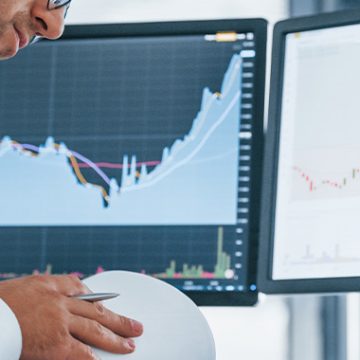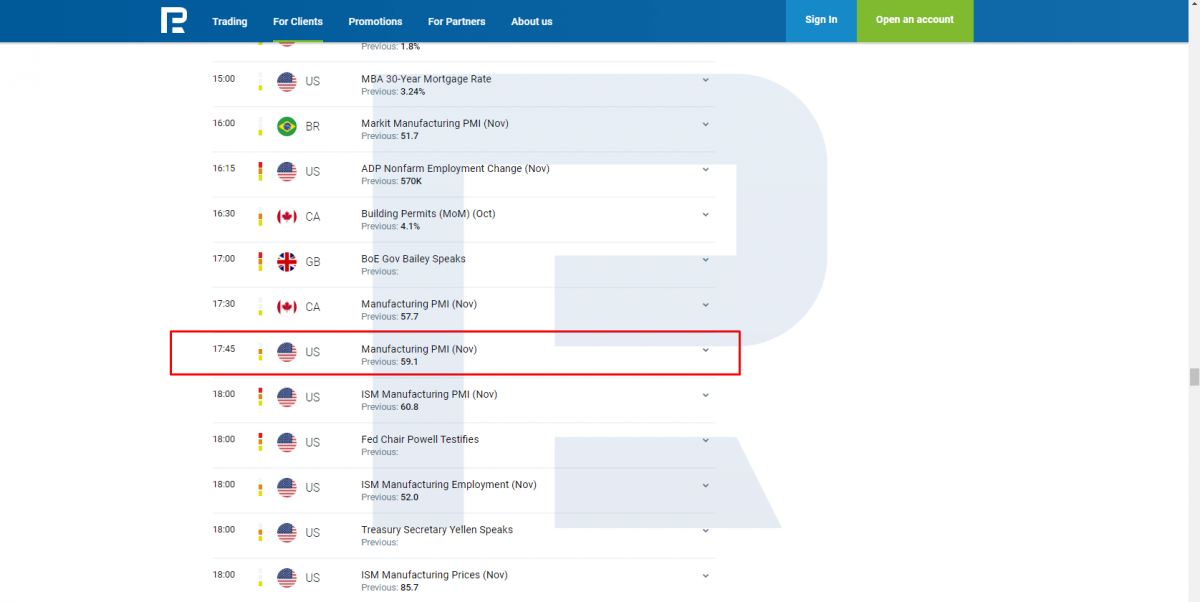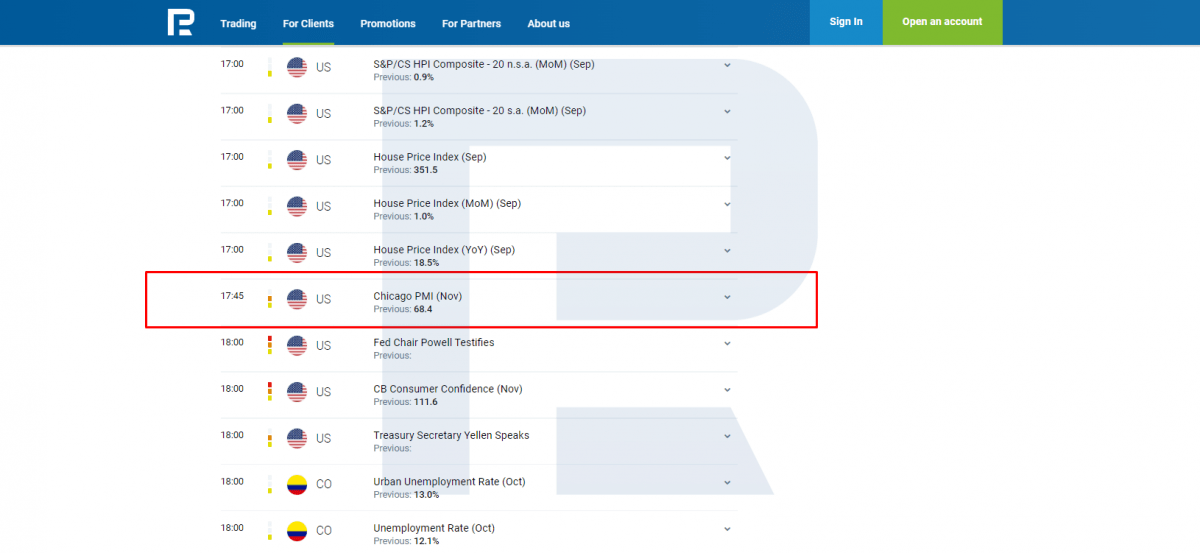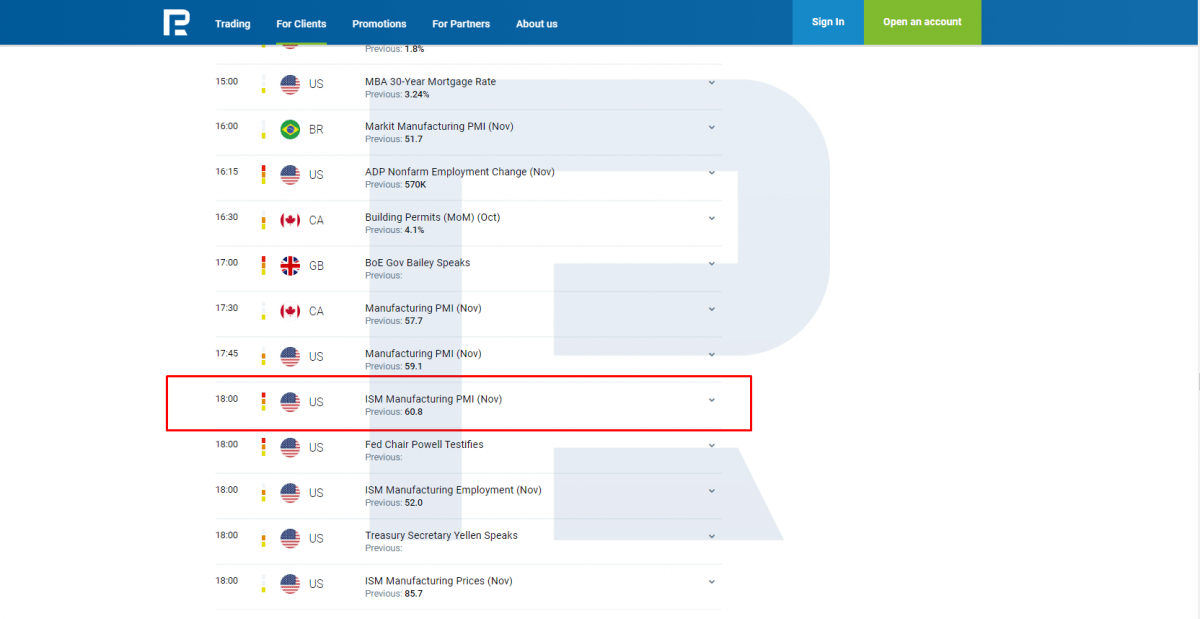
This article is devoted to the Purchasing Managers Index (PMI), its influence on the currency market, and how it can be used in trading.
What is PMI?
The PMI is a special index that reflects current state of the economy of the country or separate branches of the economy. As a rule, is assesses two main branches of economy:
- Industry
- Services
Industrial PMI has the strongest influence on the economy; investors and economists pay the closest attention to it. It is calculated by polling purchasing managers in the industrial sector in several categories:
- New orders
- Production volumes
- Stocks in warehouses
- Suppliers’ work
- Employment rate
In the poll, managers mark how business conditions have changed compared to the previous month, whether they have improved, or worsened, or not changed at all. In essence, this index demonstrates the sentiment of the middle and upper management of various enterprises.
The PMI is a leading index that allows forecasting growth or decline of the economy.
PMI indices in the USA
In the USA, there are several PMI indices that have some differences in the calculation method and the set of enterprises. Let us take a look at the three most important indices that many traders and analysts pay attention to.
Markit PMI
Data for this index is collected by Markit Group by polling purchasing managers from about 400 non-state manufacturing enterprises. Based on the poll, experts group answers by categories and multiply them by set percentage, getting the PMI values.
Index value varies from 0 to 100 (in %). The average is 45-50. Values over 50 mean growth, falling below 45 means growth has slowed down, and perspectives of the economy have worsened.
This index is published on the first work day of each month (data for the previous month) and has moderate influence on the currency market.

Chicago PMI Index
This one is calculated and published by the Association of Chicago Purchasing Managers. It represents the level of economic well-being in production in Illinois, Indiana, and Michigan.
Chicago PMI assesses manufacturing orders, manufacturing prices, and stocks in warehouses. The region represents the overall situation with manufacturing and non-manufacturing in the USA quite well.
The index above 50 means production extends, while the index below 50 indicates a slow-down of production. Chicago PMI Index is published on the last workday of the month and helps to forecast the national PMI — ISM Manufacturing Index — because these two correlate. It has a moderate influence over the currency market.

ISM Manufacturing Index
ISM stands for Institute for Supply Management. The ISM Manufacturing Index is the most important PMI in the USA that covers for a wide spectrum of manufacturing companies. Its dynamics most fully represents the situation in manufacturing over the country.
The ISM over 50 means manufacturing is developing, while the index below 50, conversely, means a slow-down. As a rule, the ISM over 60 indicates that the economy is overheated, and inflation is growing, which might lead to the Fed increasing the interest rate. The publication of the index (on the first workday of each month) can have a strong influence on the USD.

How does the PMI influence currency rates?
As long as the PMI is a leading indicator, demonstrating the perspective of economic development of the country, its dynamics influence the national currency.
Growth
Stable growth of the index above 50 over 3 months and more means business climate in the country is growing. Manufacturing is developing, the management is optimistic.
In the future, this will make the GDP grow faster alongside inflation, which my end in an increase in the interest rate of the CB. Hence, growth of the index results in growth of the national currency.
Falling
Regular falling of the index during three months and more means business atmosphere is unhealthy. The economy is getting weaker, managers are pessimistic.
Falling of the index below 40 might forecast a recession. In such a case, the CB might decide on decreasing the interest rate. Hence, a decline of the index means falling of the national currency.
Using PMI in Forex trading
PMIs can be used for trading in Forex as well as other economic indices. There are two main options, which are long-term investments and short-term news trading.
Investments in currencies
This is a long-term approach that requires using a large capital for a long time. This method uses fundamental analysis for checking the attractiveness of a currency for investments. All the main economic indices are analyzed, including the PMI, GDP, inflation, etc.
Positive dynamics and high PMI values mean bright perspectives for the national currency. If other indices do not contradict, the currency becomes interesting for investments.
Conversely, a lengthy decline of business activity, confirmed by a decline of other indices makes the currency attractive for sales.
Trading news
This is a short-term Forex trading method that has little requirements concerning the size of your capital. Trading on news is based on the short-term influence of the PMI on the currency rate. On the USD quotations, the ISM Manufacturing Index has the largest influence. If the index is much higher than forecast, the national currency grows abruptly, while a decline, on the contrary, provokes falling of the dollar.
You can try and use this temporary surge in the quotations for making a profit. For this, analyze the price chart and plan promising trades on the momentum after the publication. Use tech analysis to set important support and resistance levels, catch price patterns and other landmarks.
Bottom line
The PMI is a leading indicator that assesses the development of the largest enterprises of the country by polling manufacturing managers. Its dynamics represent changes in the business atmosphere in manufacturing, allowing for forecasts of further development. Publication of the PMI has an influence on the national currency.
The post How to Use PMI in Forex Trading? appeared first at R Blog – RoboForex.
